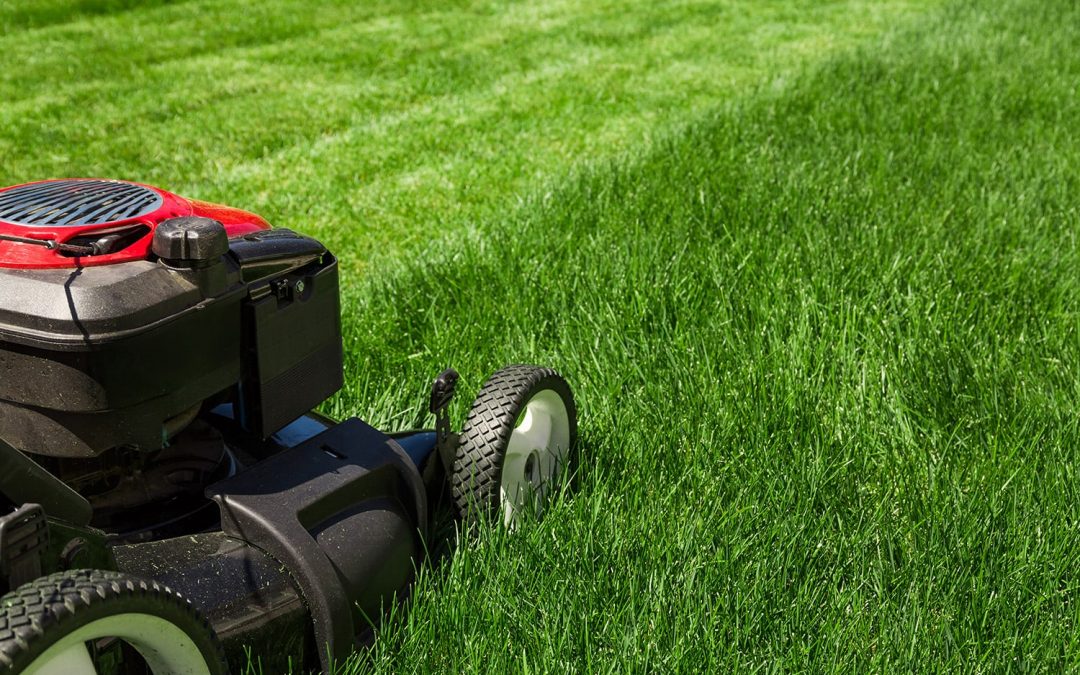Overseeding can help you achieve a perfectly lush lawn. Follow these steps on how to overseed a lawn for greener grass and a healthy yard.
A lawn with great grass increases curb appeal, adds allure to outdoor areas and makes neighbors green with envy. One way to grow lush, healthy grass is by overseeding—a straightforward and inexpensive process that requires only a few steps and a minimal amount of tools.
What is Overseeding a Lawn?
Overseeding is spreading grass seed over existing turf, filling in bare spots, thickening thin areas and reinvigorating lawns that have lost their luster. It’s an easier way to create the perfect yard than starting over from scratch.
When to Overseed a Lawn
The key to overseeding a lawn is doing it at the right time of year, which is dictated by where you live.
- Northern areas: Overseeding in the fall is recommended for those in northern regions with cool-season grasses, like Kentucky Bluegrass and fescue blends. Fall overseeding helps ensure the grass receives the warm soil, cool temperatures and constant moisture it needs to grow and thrive. Overseeding in the fall also means fewer weeds to compete for nutrients and plenty of sun since the trees have started to shed their leaves.
- Southern areas: Overseeding in the spring is recommended for southern regions with warm-season grasses, like Bahia, Bermuda and Zoysia. Overseeding a lawn in the spring gives warm-season grasses the time they need to germinate and grow before the summer temperatures heat up.
Some southern homeowners will also fall overseed using cool-season grasses. Warm-weather grass goes dormant in colder temperatures, and cool-weather grasses help keep their lawns green throughout the winter.
How to Overseed a Lawn
Step 1: Mow your lawn low
Successful overseeding begins with the seed’s ability to contact the ground and its access to sunlight and water. Give your grass a low mow to help the seeds get the water, light and nutrients they need.
Step 2: Prep the lawn
Good contact between the seed and soil leads to faster germination and better results. After mowing, rake your lawn to remove clippings, dead grass, sticks or other debris that might interfere with the seeds connecting with the ground. Raking also loosens the top layer of soil and promotes deeper root growth by making it easier for air and water to get to the seed.
Step 3: Fix existing issues
For best results overseeding grass, address any problems that go beyond normal thinning and browning.
- Dethatch: Thatch is a layer of living and dead plant material that can keep seeds from germinating. Use a special rake or tow-behind dethatcher to make sure your lawn is set up for overseeding.
- Aerate: Soil compaction caused by heavy foot traffic or machines, like a tractor or mower, can inhibit the soil’s water and oxygen absorption and inhibit the growth of a root. Manual-push and tow-behind aerators break up compaction.
Step 4: Improve the soil
Enriched soil provides a nutrient-rich bed for your seed. Spread a thin, quarter-inch layer on your lawn before overseeding.
Step 5: Choose an appropriate grass seed
High-quality grass seed yields top-notch turf, so choose the right seed for your area. Cool-weather grasses are ideal for fall overseeding in northern states (and growing winter grass in southern regions), and warm-weather grasses should be used for spring overseeding in southern parts of the country.
Step 6: Spread the seed
Follow the label-recommended overseeding grass rates and get spreading, either by hand or with a rotary or drop spreader. For even seed distribution, it’s best to seed on a calm day without any wind.
Step 7: Feed and water the lawn
Provide the seeds with the nutrients they need for fast growth with a fertilizer specially formulated for new grass. Fertilizers used after overseeding a lawn generally contain phosphorous, which promotes healthy roots, and nitrogen to deliver vibrant green grass.
Seeds need consistent moisture to grow, so water your freshly overseeded lawn at least twice a day until the grass gets about an inch high. Avoid overwatering and puddling, as this can wash seeds away.
Step 8: Minimize traffic
Stay off your lawn and let the grass get established. Avoid mowing the recently overseeded grass until it reaches the same height as your existing lawn.
Overseeding grass is an easy weekend task that requires minimal maintenance for a few weeks following. The results? A green, lush lawn that is guaranteed to make a stellar first impression.


